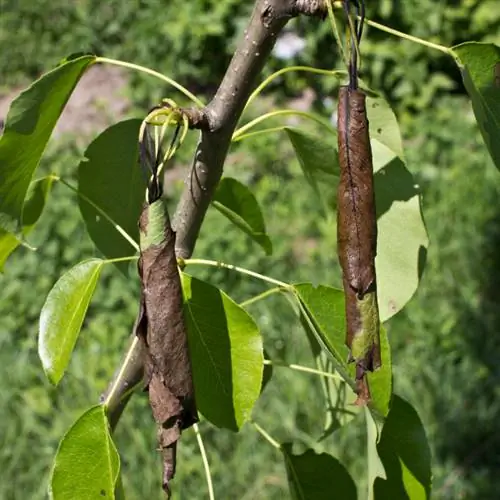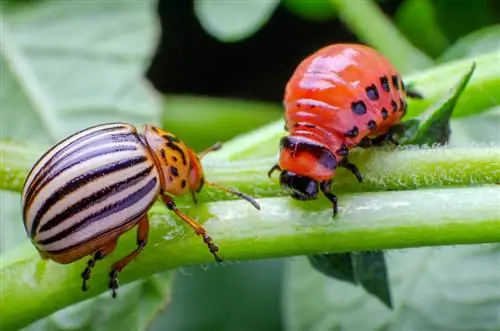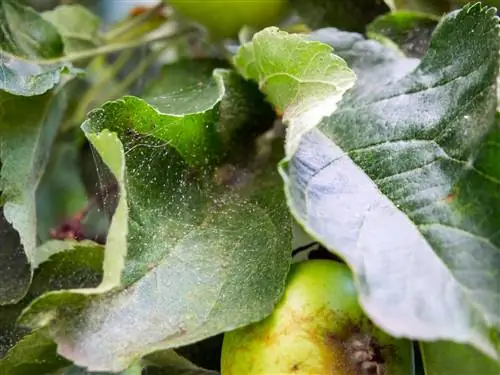- Author admin [email protected].
- Public 2023-12-16 16:46.
- Last modified 2025-01-23 11:21.
Like the boxwood borer and the boxwood shoot dieback caused by a fungus, the boxwood spider mites are also a relatively new species. Eurytetranychus buxi first appeared in Germany in 2003. The species probably came here through imports from North America and has been spreading ever since.

How do I recognize and combat spider mites on boxwood?
Boxwood spider mites cause white or yellowish mottling on the leaves. To prevent infestation, sufficient irrigation, balanced fertilization, an airy location and the correct planting distance are important. Rapeseed or neem oil and potash soap are suitable for combating this.
Appearance and lifestyle
Boxwood spider mites, like all spider mites, are tiny and therefore easy to miss. Females grow to between 0.4 and 0.5 millimeters in size, while males remain smaller at an average of 0.35 millimeters. The animals are usually reddish-brown in color and react quickly to disturbances. The first generation hatches at the end of May, followed by another generation about every four weeks. Between six and eight generations develop per season, with the last eggs laid overwintering on the plant and not hatching until the following year.
malicious image
Damage from spider mites is typically shown by tiny white or yellowish speckles on the upper sides of the leaves. They are often completely covered, then after a while turn reddish to bronze and fall off. Other leaves, on the other hand, may only be slightly affected. Eurytetranychus buxi rarely develops the characteristic fine webs. If these appear, it could also be an infestation with the box tree borer.
Combat
The spider mite is comparatively easy to combat. Good results were achieved with pesticides based on rapeseed or neem oil. These must be spread in early spring before April 15th or in autumn to kill the winter eggs and thus the first generation. However, if the infestation is only noticed later in the year, potash soap has proven to be effective. This is contained in many remedies against aphids. A natural predator of the spider mite is the predatory mite Typhlodromus pyri, which is particularly hungry between mid-April and early May.
Prevention
A spider mite infestation can be prevented quite well with the following measures:
- Ensure an adequate supply of water.
- Mulch boxwood beds to retain moisture in the soil longer.
- Make sure that fertilization is balanced and not too nitrogen-heavy.
- Choose a suitable, airy location.
- Maintain the recommended planting distance.
- Promote the settlement of beneficial insects in the garden, for example by setting up an insect hotel.
Also check your book regularly, if possible with a magnifying glass, in order to identify any infestation as quickly as possible and take appropriate countermeasures.
Tip
If you discover the characteristic damage caused by spider mites on your box trees, you should examine them carefully: animals are not always actually present. Sometimes a phase of rainy, rather cool weather is enough to kill the warmth-loving spider mites.






